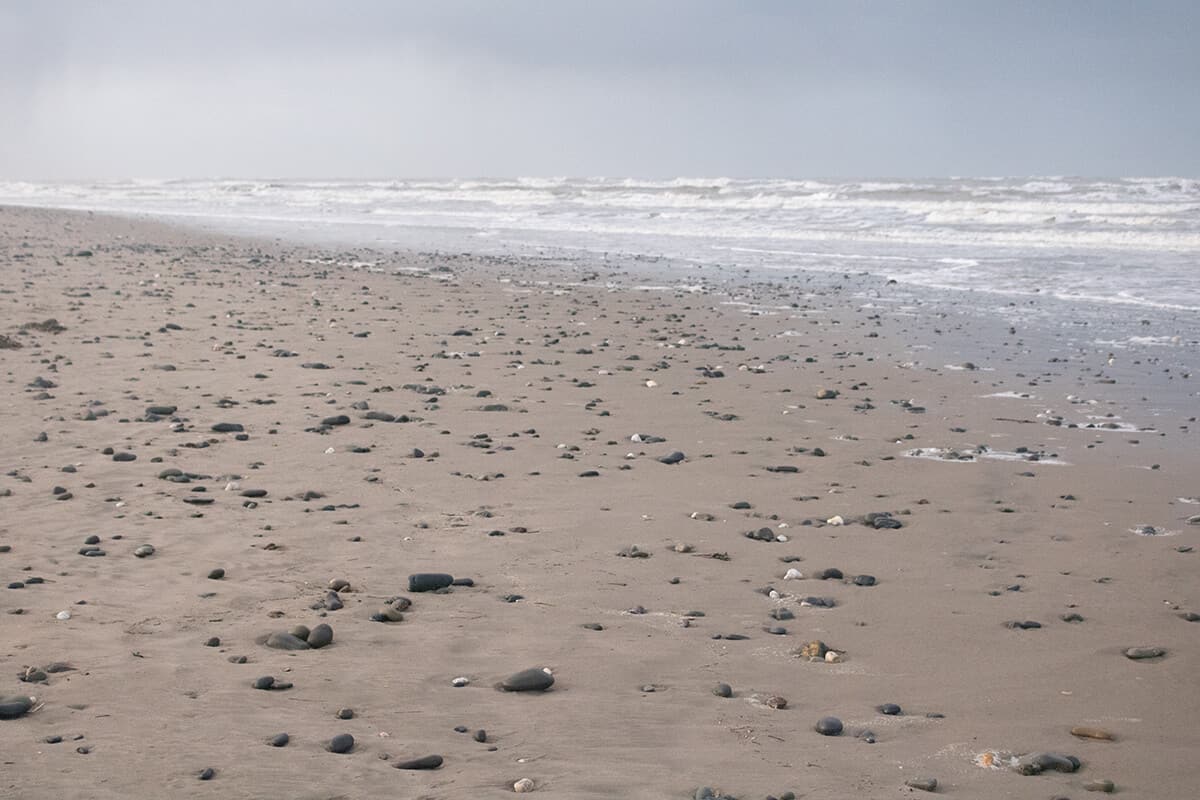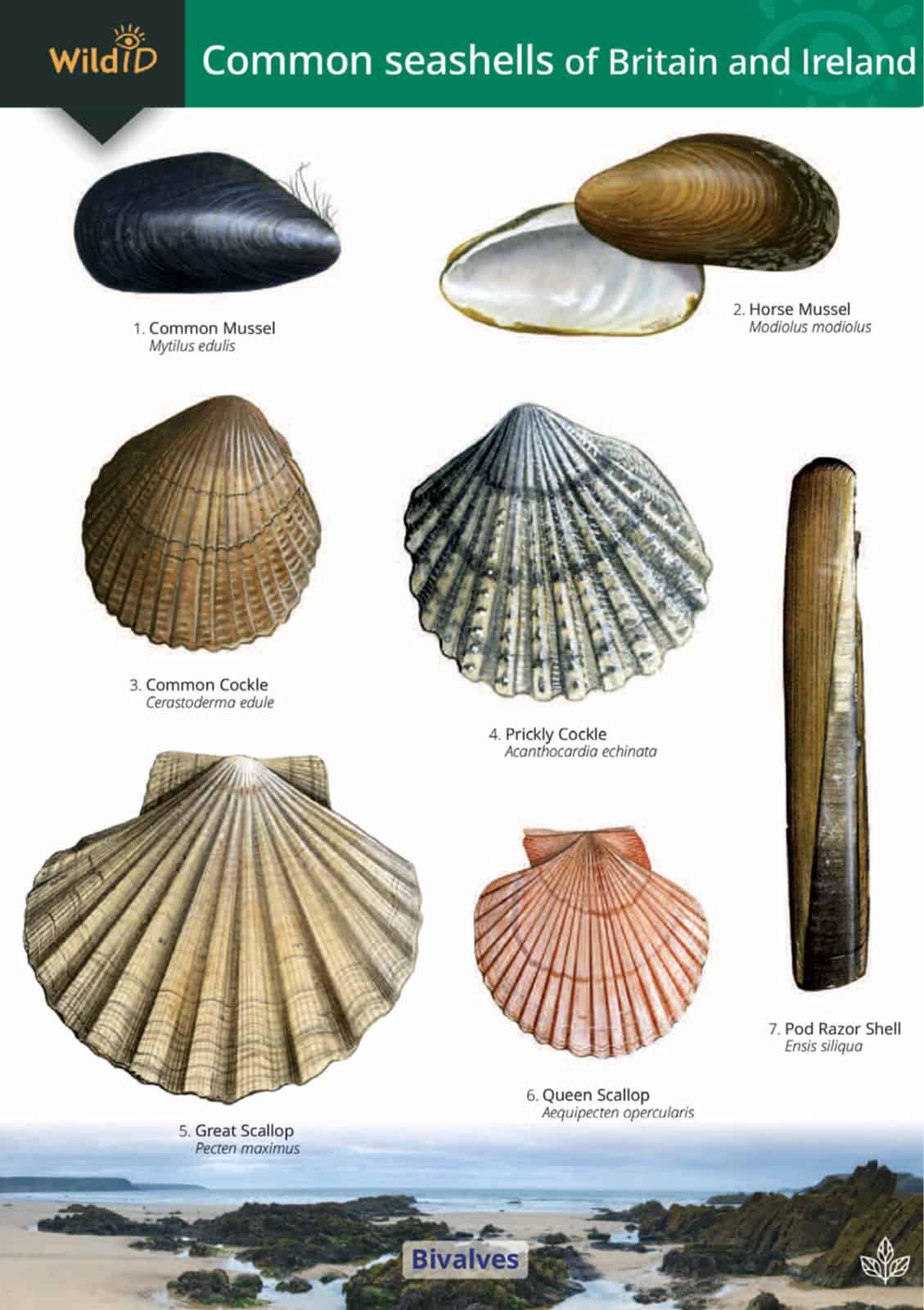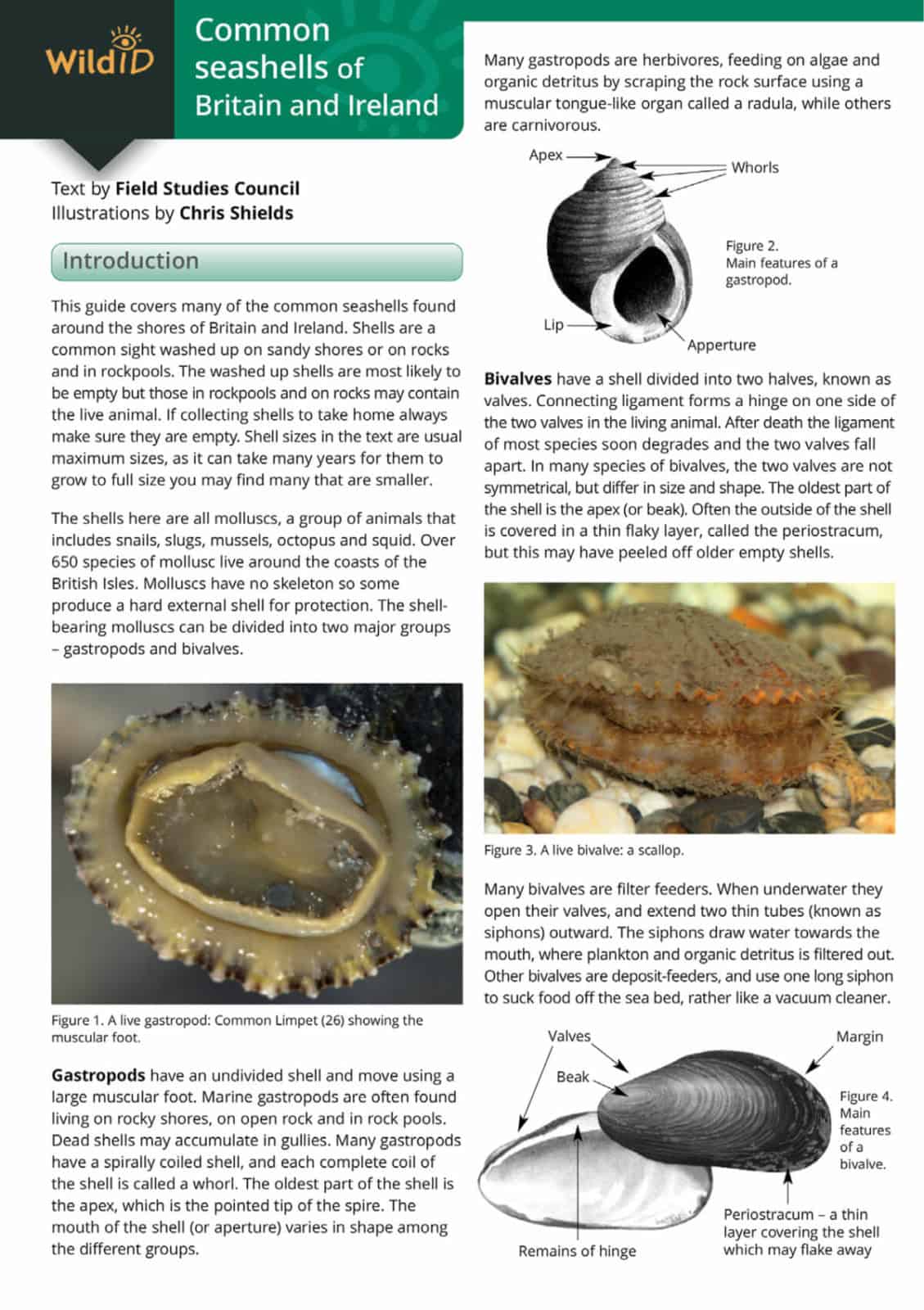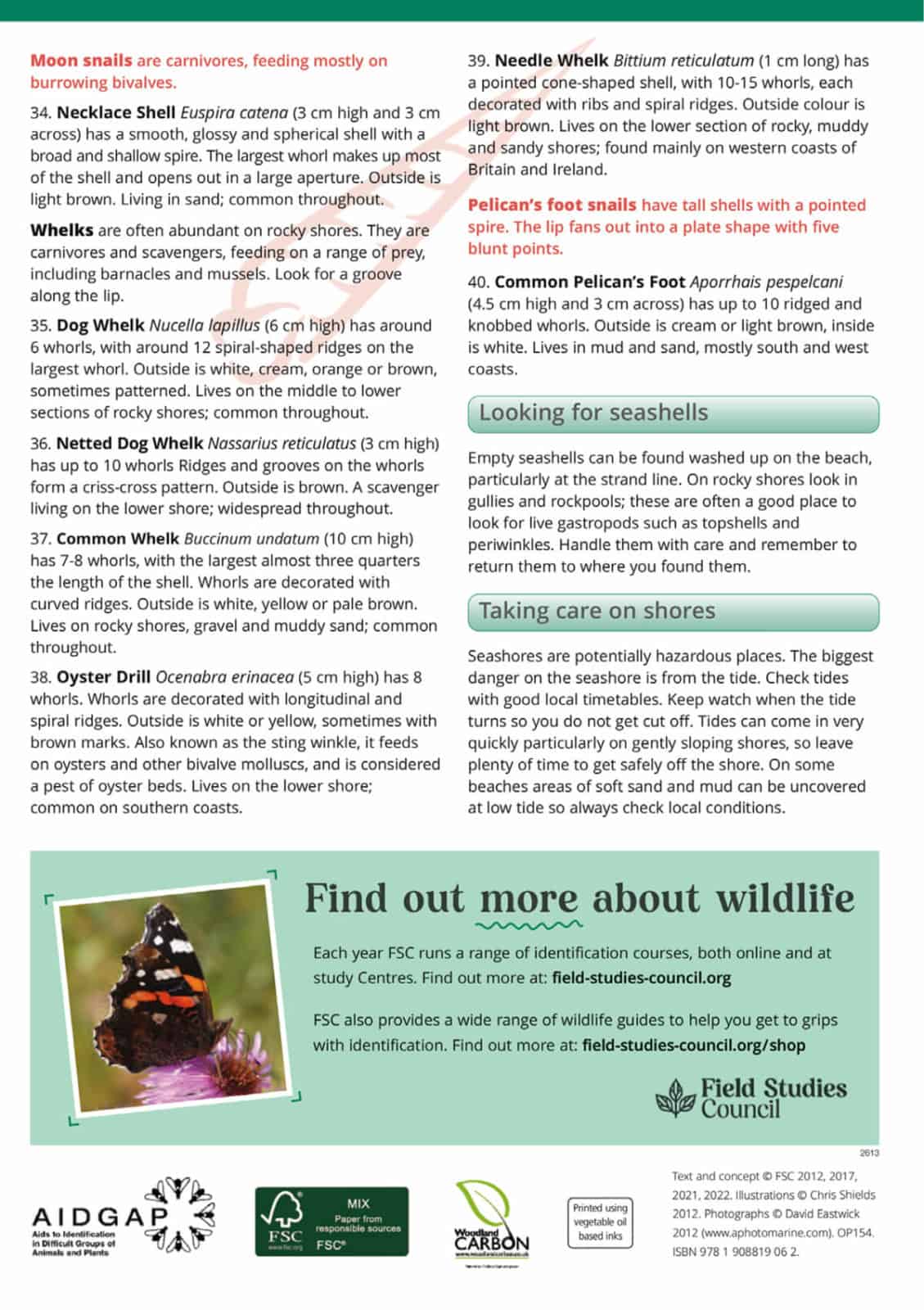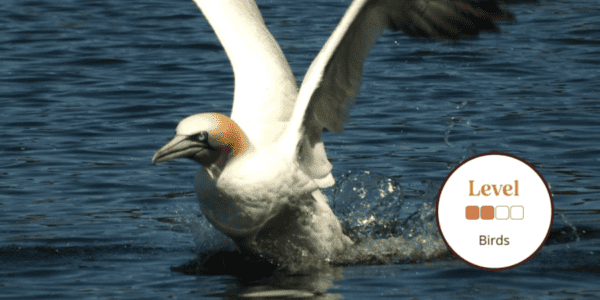Seashells guide
The FSC Seashells guide features 40 common seashells found on the seashore in Britain and Ireland. Accompanying text describes how to identify each type of shell.
Shells are a common sight at the seaside. This seashells guide is perfect to take with you when walking along the beach or coastline. Great places to hunt for seashells include the strandline, beaches close to river estuaries and bottom of the beach at low tide. Alternatively, if you just want to learn more about seashells, this guide is just the place to start!
The animals that produce the seashells featured on this guide are all molluscs. This group of animals includes snails, slugs, mussels, octopus and squid. As a group, molluscs have no skeleton, so some produce a hard external shell for protection. Shell-bearing molluscs can be divided into two major groups: gastropods and bivalves.
Bivalves featured on the seashells guide include mussels, cockles, scallops, razor shells, oysters, venus shells and others. The gastropods include topshells, periwinkles, limpets, cowries and whelks.
- Bivalves have a shell divided into two halves, known as valves. Connecting ligament forms a hinge between the valves in the living animal. But after death the ligament soon degrades, and the two valves fall apart. So an empty seashell washed up on the beach may actually be a single valve. Identification of bivalve shells depends on shape and colour.
- Gastropods, unlike bivalves, have an undivided shell. These animals predominantly live in rocky shores, on open rocks and in rock pools. Thus dead gastropod seashells may accumulate in gullies. Many gastropods have a spirally coiled shell. Identification of gastropod shells depends on the shape of the mouth underneath, the number of spiral coils and the shape of the spire.
Our popular seashell field guide measures 24.5cmx17.5cm and is extremely lightweight and compact, and the perfect shell identification chart for popping in your bag when heading to the coast. All wildlife identification guides are laminated, meaning they are showerproof for use outside. and can be wiped clean.

